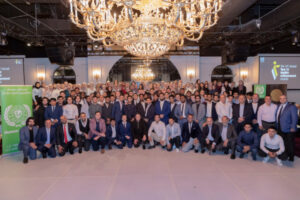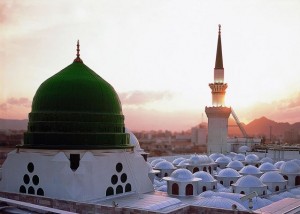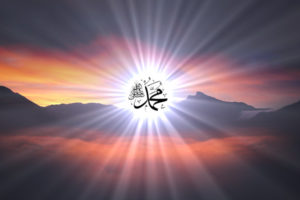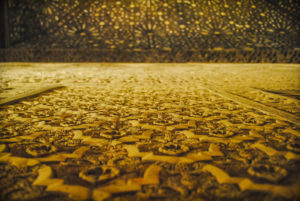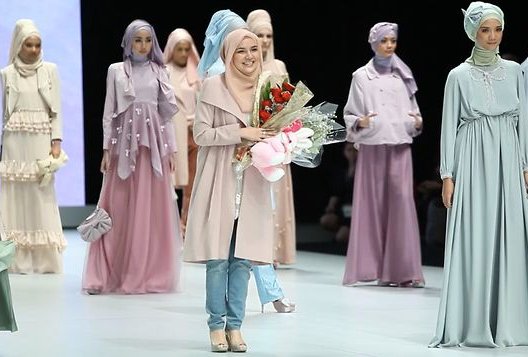
Designer Ria Miranda after a show.

By: Ratna Dewi Purnamasari
Source: Jakarta Globe
In today’s global competitive marketplace, style for the modern Muslim woman is evolving; incorporating fashion from the West while at the same time appreciating traditions and believes of the generations before.
Headscarf, when worn as a hijab, plays a key role in this transformation, defining itself as a sign of beauty and strength, as opposed to a sign of oppression and dependence. Hence, hijab is seen as a tool of empowerment: it defines a woman’s presence with power and style.
Being a country with the largest Muslim population in the world is a tough responsibility for Indonesia, especially for Muslim women. The way they dress as Muslims is a dynamic, experimental process carried out through the medium of color, design and fabric, involving the complicated negotiation of fashion and faith; fighting in a battle within self in matter of discovering individual identity combined with Islamic aesthetic.
At a recent Muslim community event in Melbourne, I had the privilege to chat with prominent Indonesian fashion designer Dian Pelangi. She told me that by creating fun and colorful designs for Muslim women in particular, many women in general would feel encouraged to wear hijab.
Does that mean Muslim fashion industry is selling religion to promote culture and style? I’d say no.
Being a Muslim woman does not mean you cannot wear fashionable, colored attires. You can wear whatever pleases you. Hijab, however, is not something to be designed in the sense of appealing dress of fashion — which, in most cases, the basic notion of hijab itself is violated.
Muslim fashion capital
On March 20, British designer Debbie Wingham shocked the world by selling her Red Diamond Abaya at 11.7 million pounds (US$17 million), making it the most expensive garment in the world.
There are two thousand stones in the abaya, which include fifty 2-carat white diamonds, fifty 2-carat black diamonds, 1,899 pointer diamonds and the one beautiful red diamond. The red diamond used is a natural SL2 clarity and has a value of $7.4 million.
The global Muslim fashion industry is estimated to be worth $96 billion and is rapidly growing. The industry was created through the inspirations and motivations of designers and marketers of Muslim fashion in the world. Jakarta in particular is one of those cities where the dynamic and diverse world of Muslim fashion is on display in the streets of Indonesian multicultural cities.
Although the quality of Indonesian fabric and handcraft is on par compared to the European-based luxury brands, Indonesia aimed to be the fashion capital for Muslim fashion by 2020 following London, Paris and Milan for couture luxury brands.
In recent years, the fashion industry has noticed an increasing growth and shift in fashion trend for Arabian inspired embellishments and couture. Designers including Valentino, Elie Saab, Hussein Chalayan and Zuhair Murad, have all been inspired by Middle Eastern culture and religion. Brands in which the designers came from Muslim countries grabbed the Arabian culture as inspirations for their collections in order to get Muslim women as their niche market.
The main principle behind this growth is the generation of young, confident and tech-savvy Muslims, who are embracing their faith and their self-identity with confidence. The development of the industry in Indonesia can be seen with the increase in young entrepreneurs catering for this demand. Muslim fashion has become one major consumer market with high innovation and exponential growth.
The growth in female designer and female entrepreneurship campaigns in Indonesia are supported by Muslim communities who understand the power of women in business. Hijabers Community, for instance, where most of the main committee are inspiring young Muslim fashion designers, acts as a testament in which through these communities; women are finding a way out to market and their growth is not going to stop. Having said that, entrepreneurship — women entrepreneurship in particular — is the heart of Islamic heritage.
